Kottukkal Cave Temple in Kollam
The Kottukkal cave temple is a rock cut place of worship in the southern district of Kollam in the God's Own Country. This temple was built somewhere between 6th and 8th century CE. The cave temple gets its name from the place it is situated. The place Kottukkal is situated near Anchal in Kollam district of Kerala. The temple houses many deities and they are placed in different directions according to the Temple Vaastu. This temple can be reached by road from Kollam.
Cave Temple
Kottukkal cave temple is located near a place called Anchal in the southern district of Kollam in Kerala. The temple bears the signature of classic rock-cut architecture. The temple complex would give an appearance of a sleeping elephant when viewed from a certain distance. The ancient temple was built over a period of time. However, the exact date is not clear as there is no clear reference to this temple in any of the older literature pertaining to ancient Kerala. The historians believe that the temple could have been built between 6th and 8th century CE. The name of the temple is derived from the place it was built. The name of the place is Kottukkal. In English language, Kottukkal means carved rock. In Malayalam, it can be inferred as Kottiya Kallu. The temple complex has two caves of unequal size. Both of these caves face east as it is the custom followed while building temples from ancient times. The visitors cooling their heels in the premises of the temple would be doing well by enjoying the cool breeze coming from open space below. Moreover, the calmness and tranquillity of the surroundings would bring back the travellers again to this idyllic spot. The best time to visit this cave temple is between December and May every year. 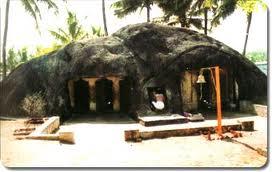
Temple Deities
The East-facing bigger cave houses the main deity Ganesha. Other idols found in the bigger cave include monolithic Nandi. Lord Shiva is also consecrated in this bigger cave as a Shiva Ling. The smaller cave has an idol of Hanuman. The local mythology states that the incarnations of Shiva and Nandi had brought the big rock to the area. Later, another small rock near to it was identified to relieve the pain when the bigger rock kept in the head. The daily rituals for the temple are done by the Travancore Devaswom Board (TDB). This temple is just 45 kilometres from the Kollam city by road. The deity combination of the Shiva Lingam, Nandi and Hanuman can never be found in any temple found inside the country.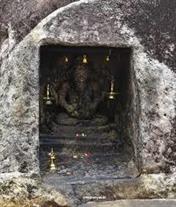
Temple History
The local historians believe that the construction of this temple complex can be traced back to the 7th century AD. During the construction of this rock temple, Nedila Parathaka Nedumchadayan was ruling a small princely state Chadayamangalam nearby. Therefore, the historians suggest that this ruler from the neighbouring Chadayamangalam could have built this rock-cut temple. The temple is now located in the centre of the party fields. Another school of thought thinks that this temple was built during the Pallava period. The historians subscribing to this school of thought that this temple is contemporaneous with Shore Temple seen at Mahabalipuram, near Chennai in Tamil Nadu. These historians point out to the similarity in construction style to point out the same period of construction. They argue that the same set of artisans might have worked on both the temple constructions under the Pallava rulers.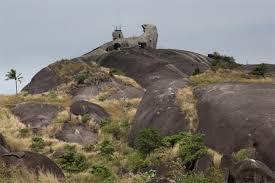
Temple Architecture
The rock-cut temple represents the glimpse of an ancient culture that was prevalent at the time of its construction. The temple showcases the traditional artistic excellence in the sculptures carved out from the giant rock. The temple has two square rooms with the presiding deity Lord Vigneshwara in between. A mandapam in front of one square room stands testimony to the skills of the artisans who have worked on this temple complex. A single rock cut roof covering both the square rooms provides the insight into the exemplary skills of artisans who worked on this project. People of the locality say the temple well dug inside the rock has never dried in hot summer seasons. The temple well was the only source of water for irrigation for the paddy fields surrounding it. Even during the hot seasons, the interior of the temple remains cool and slightly breezy. In the second room that is cut into the rock, the visitors can see Shiva Lingam flanked by the deities of Nandikeshwar and Lord Hanuman. Being a historic site, the temple is under the protective custody of the Archaeological Department of Kerala government since 1966. 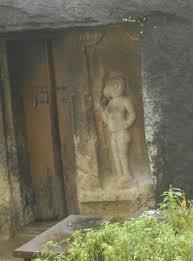
Other Attractions
The primary attraction in this place is the rock temple and its architecture. However, the visit to the following places would provide more exposure to the surroundings. In this article, we are going to list out just two places where you can feel relieved and happy.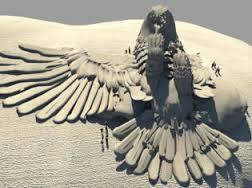
Conclusion
Kottukkal Cave Temple is found in the Kollam district of southern Kerala. Though it is not as impressive and expansive as the famous Ajanta and Ellora Caves in Maharashtra, it has its own unique style of architecture that reflects the culture of ancient Kerala. The construction of this temple can be dated back to 8th century CE. There are conflicting versions about the period of construction of this temple. The temple has two square rooms carved into a single rock. There is the idol of Lord Vigneshwara in between the two rooms. The top portion of the two rooms is covered by a single roof made of stone. The two rooms lead to the inner temples. The temple has on its premises a well that never gets dry. In the ancient times, the water from the temple well was used to irrigate the paddy fields around the temple. Uniqueness about this temple is the presence of the combination of deities of Shiva, Nandi and Hanuman. No other temple in our country has this combination of deities to worship. Another attraction nearby is the presence of Jatayu Paara. The mythological figure seemed to have met his end after meeting Lord Rama on this rock formation. Hence, let us visit this place to go into the past of Kerala and become one with the nature there.
